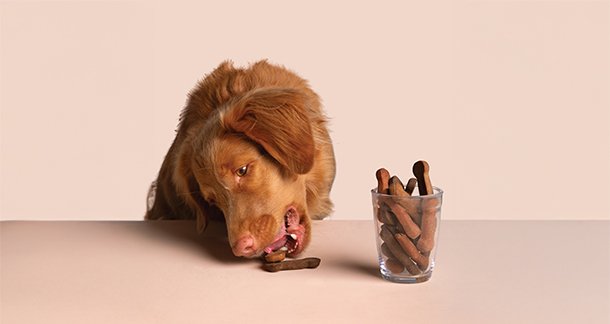Dogs are more than pets—they’re family. And like family, we want the best for them, including their diet. While a balanced meal provides the essential nutrients dogs need, the snacks we give them can also play a key role in their overall health and happiness. Establishing healthy snacking habits is vital for maintaining your dog’s weight, supporting their immune system, and adding variety to their diet. Here’s a guide to choosing and implementing nutritious snacking practices for your furry friend.
- Understand Your Dog’s Nutritional Needs
Every dog has unique dietary requirements based on factors like age, size, breed, and health status. Puppies, for example, need higher protein and fat for growth, while senior dogs may require lower-calorie snacks to maintain a healthy weight. Consulting with your veterinarian can help you understand the right portion sizes, treat types, and frequency based on your dog’s needs.
- Avoid Overfeeding Treats
Snacks are not a substitute for meals. Treats should ideally make up no more than 10% of your dog’s daily caloric intake. Feeding too many treats can lead to weight gain, which can put stress on your dog’s joints and increase the risk of conditions like diabetes. Portion control is key to making snacking enjoyable without compromising your dog’s health.
- Choose Natural and Low-Calorie Snacks
Opt for natural, single-ingredient treats like:
Carrot sticks: High in fiber and vitamins, carrots are crunchy, satisfying, and low in calories.
Apple slices: Apples are rich in fiber and vitamins A and C. Just remember to remove seeds, as they can be harmful to dogs.
Green beans: Packed with fiber, green beans make an excellent low-calorie treat, especially for dogs who need to shed a few pounds.
Blueberries: These antioxidant-rich berries can boost your dog’s immune system.
When choosing commercial treats, look for options with limited, recognizable ingredients and avoid additives, preservatives, and artificial flavors.
- Be Mindful of Ingredients to Avoid
Certain foods that are safe for humans can be dangerous for dogs. Always avoid snacks with:
Chocolate: Contains theobromine, which is toxic to dogs.
Grapes and raisins: These can cause kidney failure in some dogs.
Onions and garlic: Both can damage a dog’s red blood cells, leading to anemia.
Xylitol: A sweetener often found in sugar-free foods, it can cause insulin spikes and even liver failure in dogs.

5. Practice Portion Control with High-Value Treats
High-value treats, like pieces of cheese or chicken, can be helpful for training or reinforcing good behavior. These treats should be small and given sparingly, especially since they can be higher in calories and fat. Consider cutting them into tiny, pea-sized pieces to reward your dog without overfeeding.
6. Rotate Snacks for Variety and Balanced Nutrition
Dogs, like humans, enjoy a bit of variety in their diet. Rotating between different types of treats can keep your dog interested and provide a broader range of nutrients. For example, a day’s snacks could include apple slices in the morning, a carrot stick in the afternoon, and a few blueberries in the evening. Avoid giving the same treat repeatedly, as this can lead to a lack of balance in their diet and even cause allergies or sensitivities over time.
7. Use Healthy Treats for Training and Enrichment
Treats can be an excellent tool for reinforcing positive behavior, but it’s essential to avoid over-reliance on them. Use healthy snacks as rewards when teaching new commands or during exercise, and aim to pair treat rewards with verbal praise. You can also use treats for mental enrichment, like hiding them in a puzzle toy, which allows your dog to engage their natural instincts.
8. Watch for Signs of Allergies or Intolerances
Some dogs may have sensitivities or allergies to specific ingredients. If you notice any signs of discomfort—such as itching, vomiting, or diarrhea—after introducing a new snack, stop feeding it immediately and consult your veterinarian. Allergy-friendly treats, like single-protein chews or hypoallergenic formulas, can help avoid reactions.
9. Provide Snacks with Dental Benefits
Dental health is essential for your dog’s overall well-being, and some snacks can help with maintaining it. Look for treats designed to clean teeth or try natural options like carrot sticks or specially formulated dental chews. Raw bones can also be beneficial, but it’s best to consult your vet first to ensure safe usage.
10. Make Homemade Dog Treats
For those who enjoy cooking, homemade dog treats can be a fun, healthy option. Use simple ingredients like oats, pumpkin, peanut butter (xylitol-free), and eggs to bake wholesome snacks for your dog. Homemade treats allow you to control what goes into your pet’s snacks and ensure they’re free from unnecessary additives.
In Summary: Happy, Healthy Snacking for Your Dog
Healthy snacking is about balance, quality, and a little bit of creativity. By choosing nutritious options, practicing moderation, and keeping variety in mind, you can give your dog treats they’ll love while supporting their health. Remember, a happy, healthy dog starts with a thoughtful diet—and the occasional tasty snack to make them feel loved!

